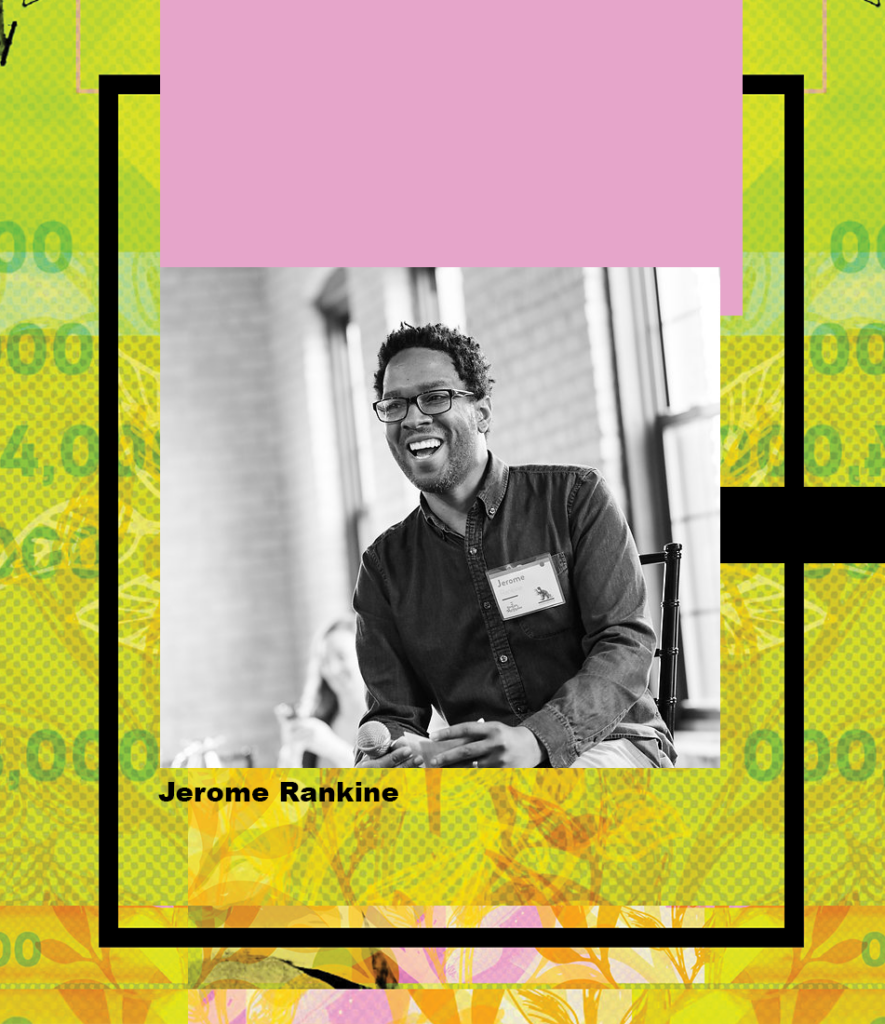
BY POLLEN EDITORIAL DIRECTOR JEROME RANKINE

I’ve been in Minneapolis for over a decade. Sure, that probably seems like just overnight to some folks, but all the same, in that time I’ve noticed something special about this city.

Minneapolitans care about each other. We get creative about ways to take care of each other. And when systems are broken, we allow ourselves to imagine new ways to fix them.
Policing has been broken in our city for a long time. And true to form, there are great ideas in the community about how it could be better. We’ve got the imagination to envision change, and the courage to go after it — but we need the freedom to make it a reality.
A “yes” vote on the public safety ballot question is a vote for that freedom. As I see it, the proposed changes to the city charter would, above all else, remove barriers to building a better system.

Like any discourse around change, this one has gotten muddied by misunderstanding, misinterpretation, and downright disinformation.
So it’s important to note what the proposed amendment doesn’t do: It doesn’t “defund” police. It doesn’t fire Chief Arradondo, or disband all law enforcement in 30 days, or any of the other scary-sounding stuff out there.
Here’s what it does:
It removes stringent rules on the makeup of our public safety apparatus — rules that were set in place over 60 years ago. The Minneapolis charter puts mandates on the size, cost, and structure of our law enforcement system — keeping us tied to a decades-old model. We’re a very different city now. Minneapolis’ immigrant population went from 7% of the city to 15% over those six decades. The portion of our population that identifies as white fell from 97% to 63%.
Given the ways policing impacts immigrants and communities of color, shouldn’t we be allowed to shape a public safety system that reflects our current needs?
The proposed amendment gives the city council — a body that represents the totality of our city, more say in how our city experiences and envisions public safety. Full mayoral control of the police leaves us to pin our hopes on a single person to have the right temperament and wisdom to guide our public safety policy.
And consider this: Though every ward in our city has roughly the same population, in 2017, ward 13 in Southwest Minneapolis delivered more votes for mayor than Northside wards 4 and 5 combined. This has been true for every mayoral election since 1993. Since our current charter gives the mayor complete authority over police, this means voters in the whitest, wealthiest pockets of Minneapolis have outized power in determining who shapes public safety policies that tend to impact black, brown, and immigrant communities most.
Wouldn’t it be better if public safety policy were guided by a body that looks like Minneapolis, and represents the vibrant and varied perspectives from across the city?

It’s understandable that people in our city are nervous about this change.
Change is scary. The status quo, flawed as it is, is known to us. But we cannot let fear consign us to accepting the unacceptable. We can’t let more lost lives, more global scandal, and more dysfunction be the cost of our inaction.
People are nervous because violent crime is spiking in Minneapolis, as it is in urban areas across America. It’s true that our neighbors are hurting from senseless loss. It’s also true that the status quo isn’t helping us. The current system is what got us here. We shouldn’t rely on it to get us out.
In the long-term, it will take a massive redirection of resources toward schools, jobs, and other social sectors, and reinvestment in the ignored corners of Minneapolis to push crime rates down for good. And given that we spend close to $200 million on policing in a given year, it’s important to note that the charter also limits our flexibility in rethinking how we want to prioritize our spending: on the police, or on the people? Our health department, which includes early childhood programs and the office of violence prevention, is funded at around one-fifth the level of the police.
People are nervous because they’re worried about our police having “fourteen bosses,” — the 13 city council members and the mayor — instead of just one. In actuality, the amendment would give our department of public safety the same reporting structure that every other city department has today. I don’t think the fire department or health department are too confused to do their jobs effectively, and if the amendment passes, I don’t think that law enforcement would be, either.
People are also nervous because changing the charter feels like stepping into the unknown.
But we’d actually be stepping into an immediate future that only slightly differs from the present. We’d still have law enforcement in Minneapolis, and people charged with keeping us safe in our worst moments.
But instead of relying on a mayor with complete power over policing, we’d be empowering our full city council to design and implement a holistic system of public safety, and giving them more tools for doing so.

The truth is, the charter amendment is not a complete solution for what ails policing in Minneapolis. It is a way to clear a path toward one — a path that our whole city would have more power in choosing.
It’s not an overnight change that will transform Minneapolis as we know it. It’s a change that takes the brakes off of our imaginative drive to make our city better in the long-term.
![]()
That sounds good to me.

contributors


